How Rewilding Arts Prize winner Amanda McCavour reimagined native plants for an exhibit designed to bring people closer to nature.

In March 2022, Paige Court at the Chazen Museum of Art was taken over by wild plants.
Suspended from the building’s soaring three-storey ceiling, 60 panels of sheer netting featured larger-than-life imagery of native Wisconsin-area flora. The panels were 30 feet long and visible from the galleries on each floor that overlooked the space, placing viewers amidst a field of greenery. Like a mobile, they spun 360 degrees and the lightweight fabric reacted to the subtlest draft of wind, creating a gentle swaying like that of tall grasses in a field. “I think it captured the movement that happens when you’re outside,” says the work’s creator, Amanda McCavour.
McCavour is a Toronto-based textile artist and one of six winners of the Rewilding Arts Prize presented by the David Suzuki Foundation and Rewilding Magazine. And the art piece in question is Ode to a Prairie, one of two in McCavour’s six-month-long exhibit Suspended Landscapes: Thread Drawings by Amanda McCavour.
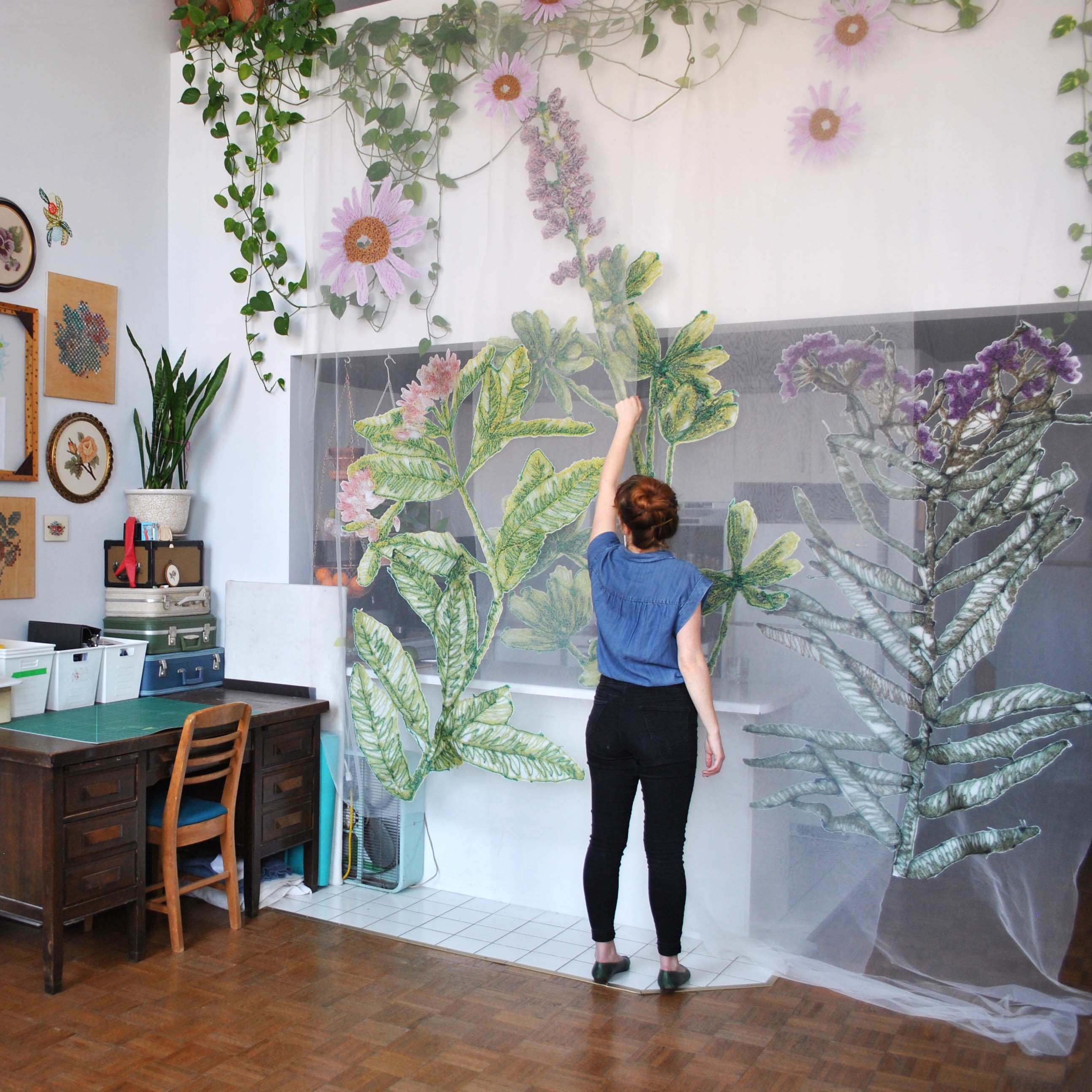
Planning for the show began in fall 2018, when McCavour first visited the University of Wisconsin-Madison, where the Chazen Museum is located. During that trip she spent time at the University Arboretum’s Curtis Prairie — the site that inspired her eventual 2022 show.
Situated within the arboretum’s 1,200 acres on the west side of the city of Madison, the Curtis Prairie began as an ecological restoration project in 1936, making it a pioneering site for what would become known as rewilding. “It was fascinating. It was beautiful,” says McCavour. “And there was something about going there, initially, that felt like this embodied experience.”
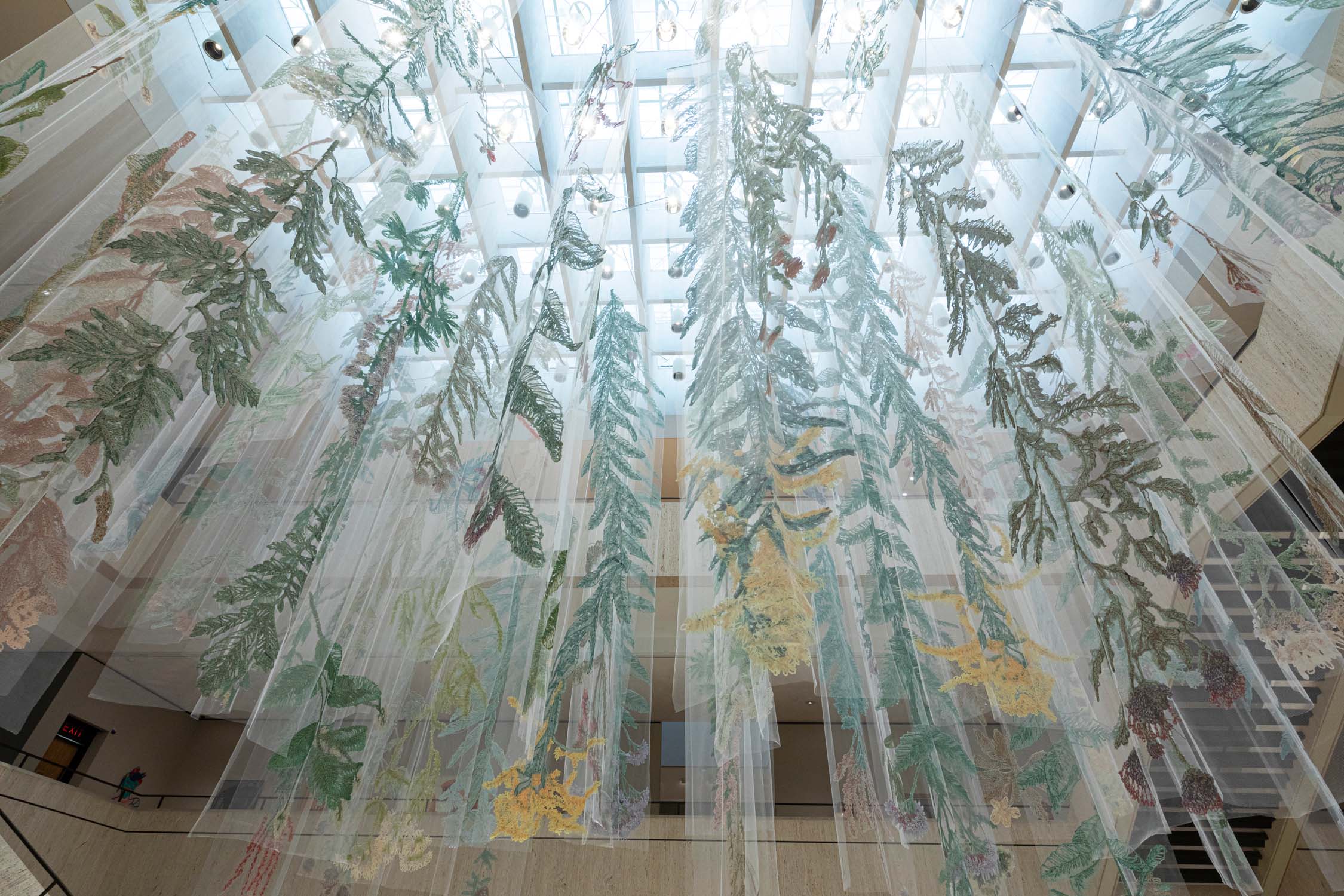
As is typical of the region, these 25 hectares of land had been subject to intense agriculture since 1836, which cleared the area of its natural habitat. Under the university’s stewardship, the land has served as a research and education site, yielding a wealth of knowledge about tall-grass prairie ecosystems and laying groundwork for the science of restoration ecology worldwide. “People were thinking about restoration in 1936,” says McCavour. “There were all these interesting things about looking back and also looking forward, but also being in a landscape.”
That feeling of the past and future coming together through nature became more pronounced as McCavour spent time at the Wisconsin State Herbarium on campus. Speaking with the ecologists and botanists there and poring over its library of pressed flowers, some dating back as far as 1890, she learned about the native plant species such as goldenrod, milkweed and spotted joe-pye weed that eventually came to feature prominently in her exhibit. “It felt like time travel,” says McCavour. “The DNA in these plants is really valuable now because they’re studying how plants have changed. They don’t know exactly how these plants could be used in the future. It’s this storage area for future research.”
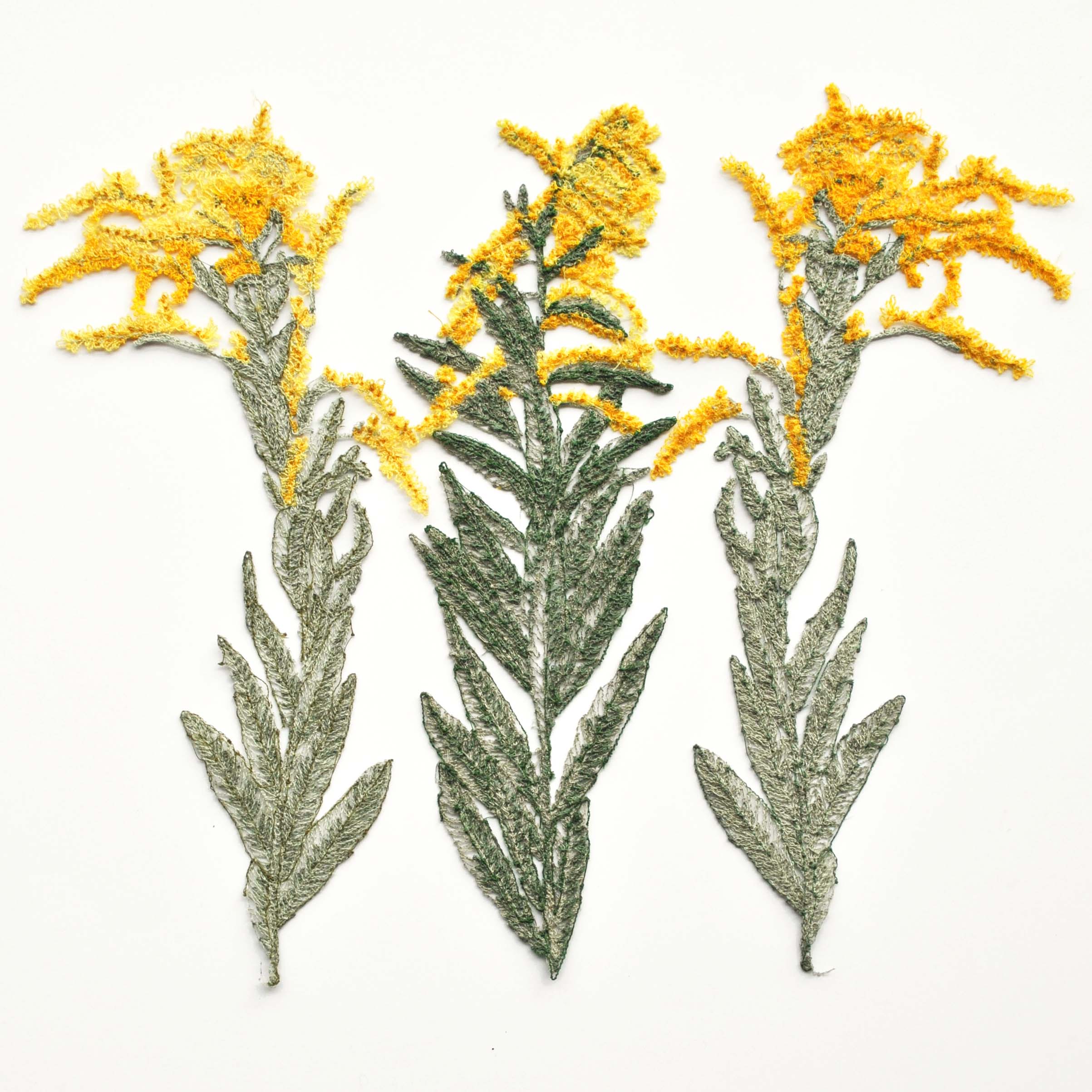
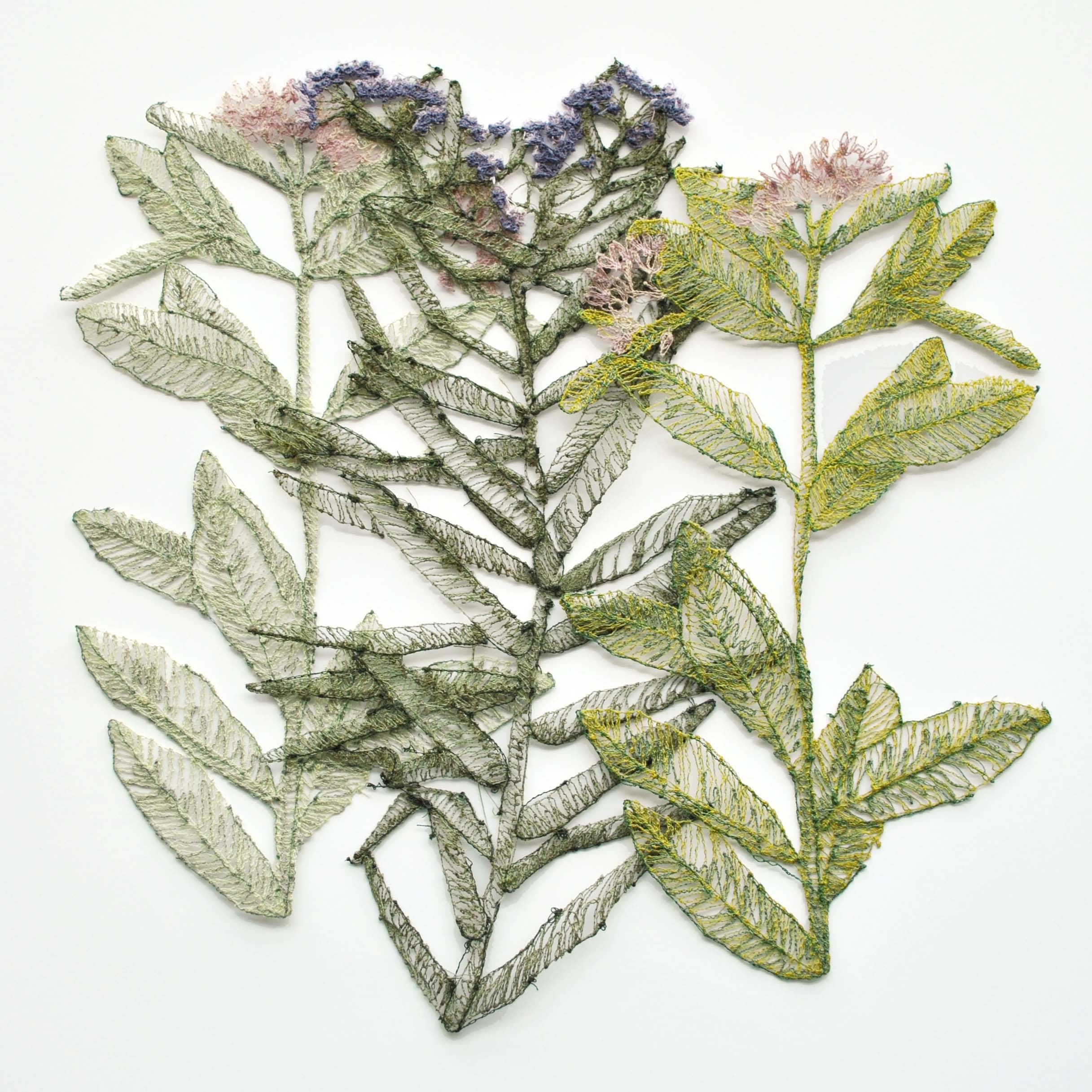
Through the sheer size and volume of their imagery, McCavour’s final pieces for the show similarly demand viewers to carefully consider Wisconsin’s flora. To make the “drawings” of the plant specimens, she machine-stitched their forms onto water-soluble fabric, which she then dissolved in water, a technique she uses often in her work. Once the substrate is dissolved, what’s left are the threads holding on to each other without a base — a drawing in air, of sorts. “They look really delicate, but you can’t tear them apart,” says McCavour.
To create the hanging panels in Ode to a Prairie, she had these “line drawings” photographed and printed onto chiffon fabric. These were then cut out and attached to the netting to create an ethereal, floating field of gigantic floral imagery.
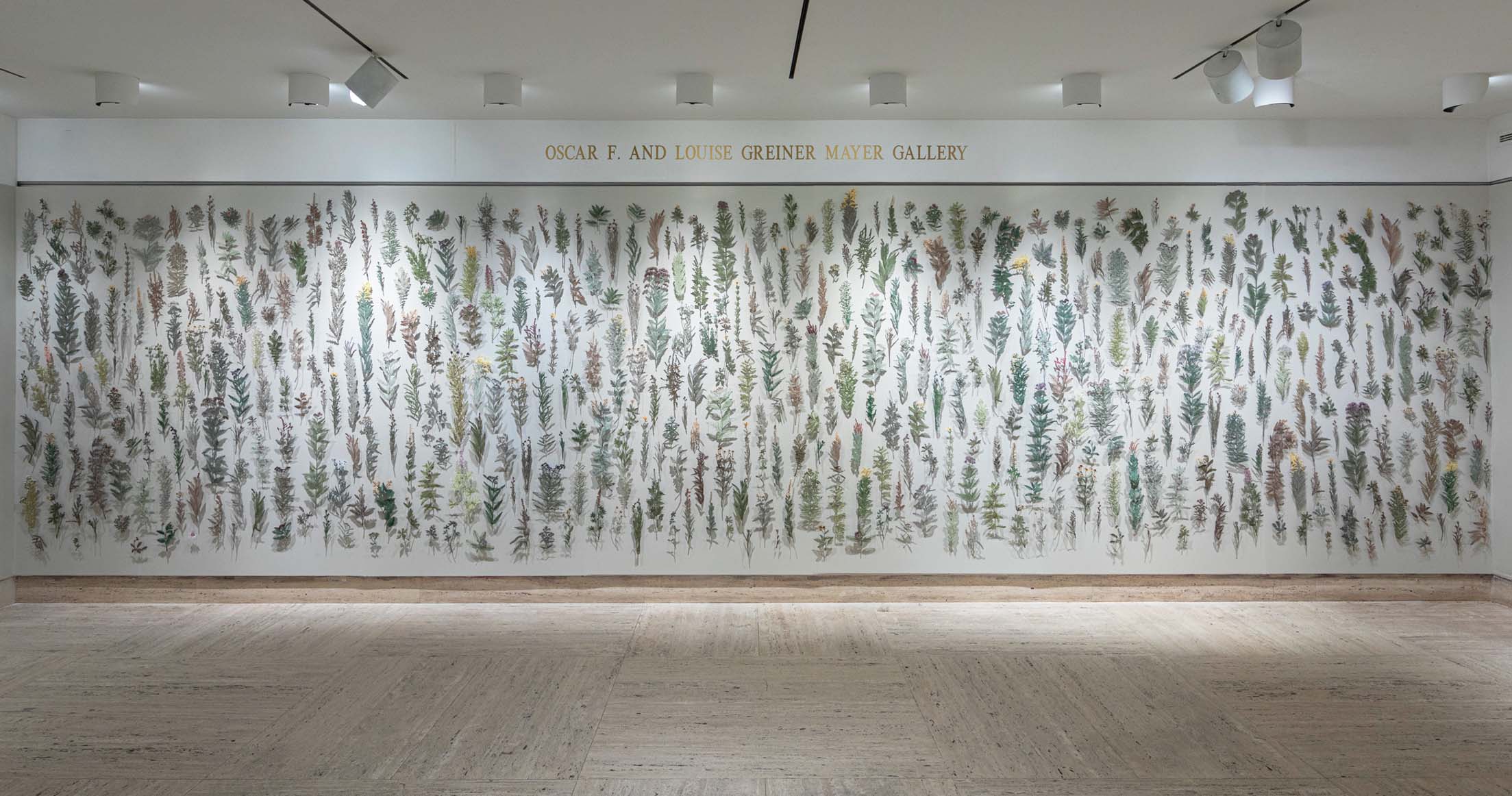
The original smaller thread drawings, along with hundreds more, were pinned en masse to a wall in the Chazen Museum’s Mayer Gallery to create Prairie Plant Studies, the second piece in the show. “From far away, they look like herbarium specimens,” says McCavour of the 26-foot-long full-wall installation. “And then as you move towards them, you realize that they’re actually textiles.”
McCavour was delighted to see how visitors reacted when coming upon this second piece, which was displayed alongside her project sketches, real-life herbarium specimens and magnifying glasses (for guests to get a close-up look). “There was a matching that happened. People would find a plant on the wall and then try to find it in the big installation,” says McCavour, who likened it to the experience of learning about a new plant and then joyfully discovering it out in the wild. “It brings you in to seeing your environment differently. My hope is that people would also do that as they moved into the larger world.”
Herein lies the beauty and power of art like McCavour’s: its ability to make people look, and see.
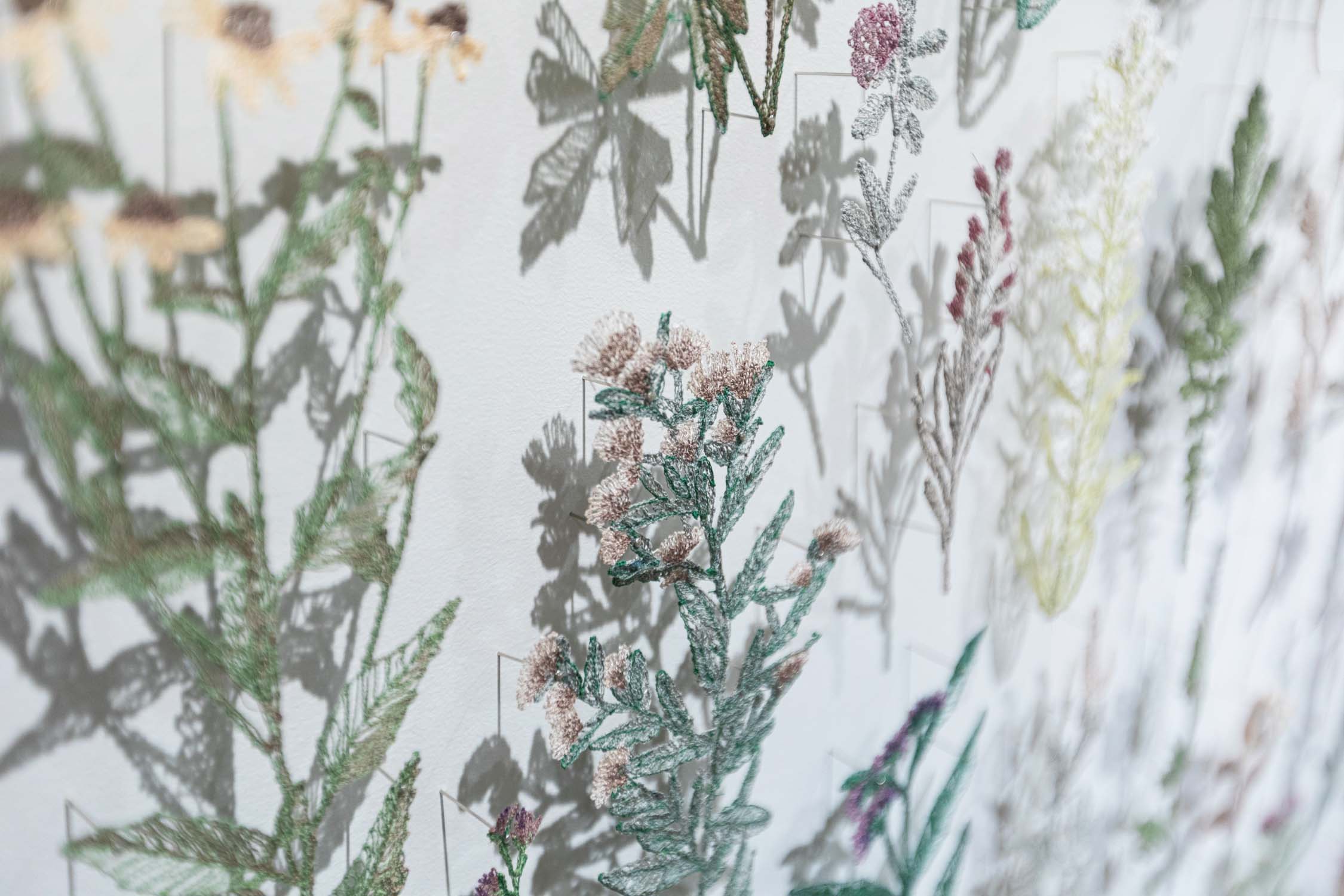
Using plants as markers of memory and place, her work invites viewers to consider the past and the future of our natural environments. Although Suspended Landscapes was specifically about the prairie restoration movement in Wisconsin, it speaks to broader ideas of rewilding and has the ability to make us aware of our own natural surroundings closer to home.
“My desire is to create an experience for people — an enveloping experience for them,” says McCavour. “I can remember experiences I’ve had with art that have changed my perspective. And I think that art does have the power to do that.”
Amanda McCavour would like to acknowledge the support of the Ontario Arts Council and The Canada Council for the Arts in helping with the production of this project.
Main image: Detail of Ode to a Prairie by Amanda McCavour. Photo courtesy Chazen Museum of Art.
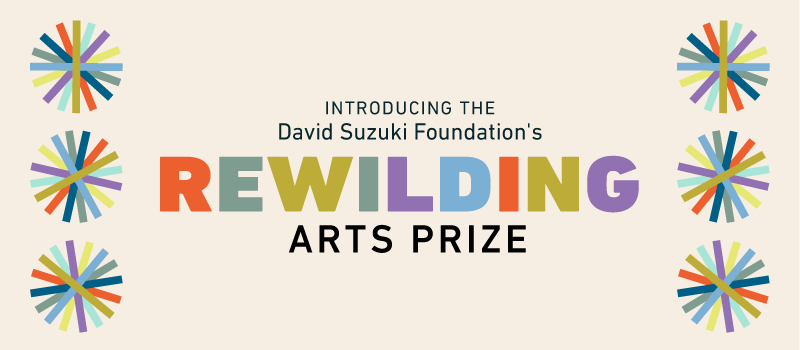
This article is part of a series on rewilding and the arts as part of the David Suzuki Foundation's inaugural Rewilding Arts Prize. Read more about the prize and the winners here:



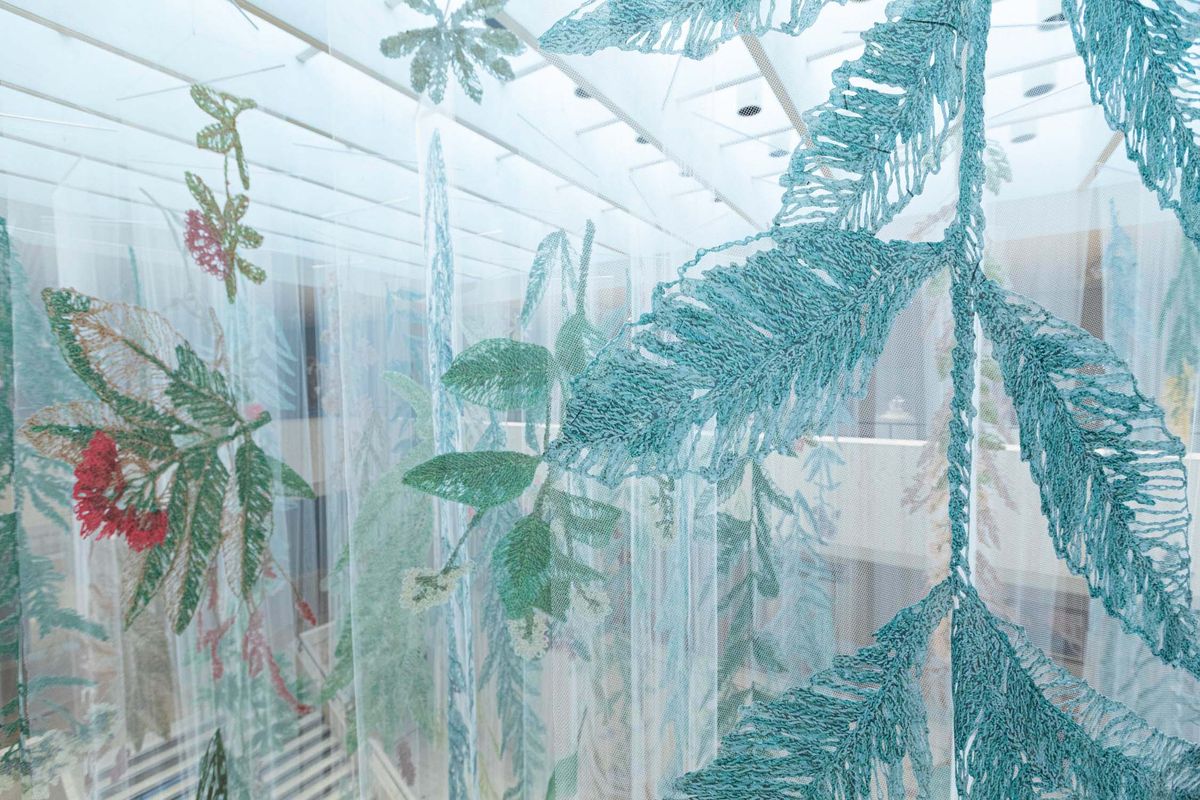


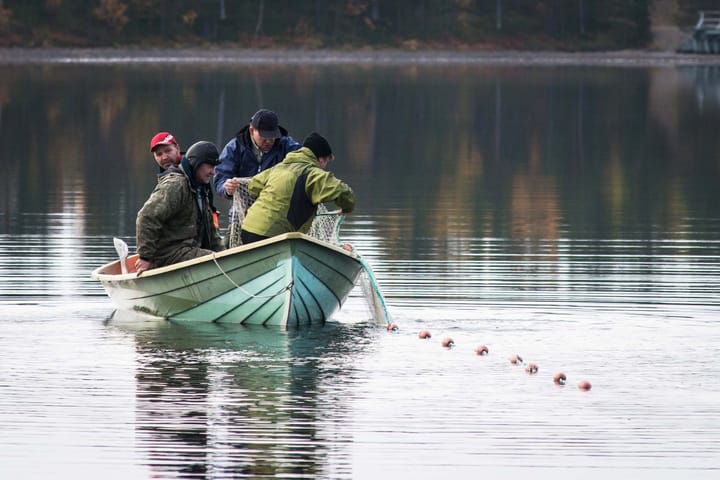


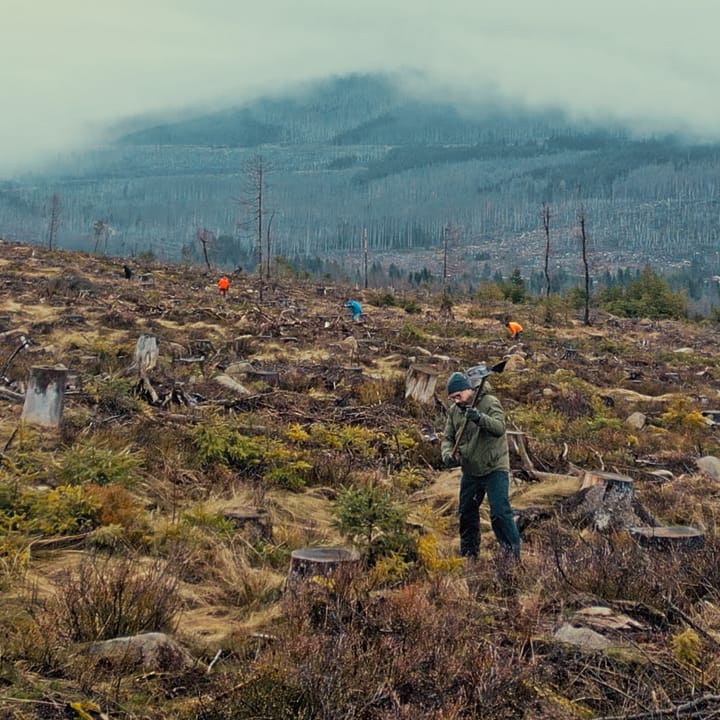
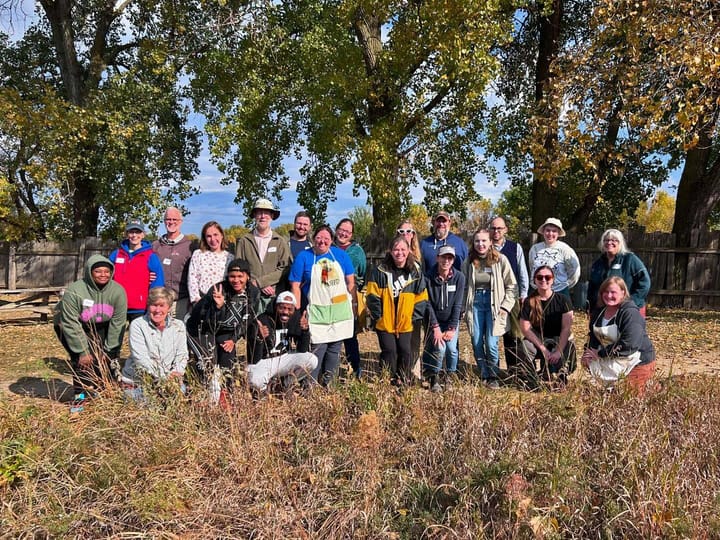
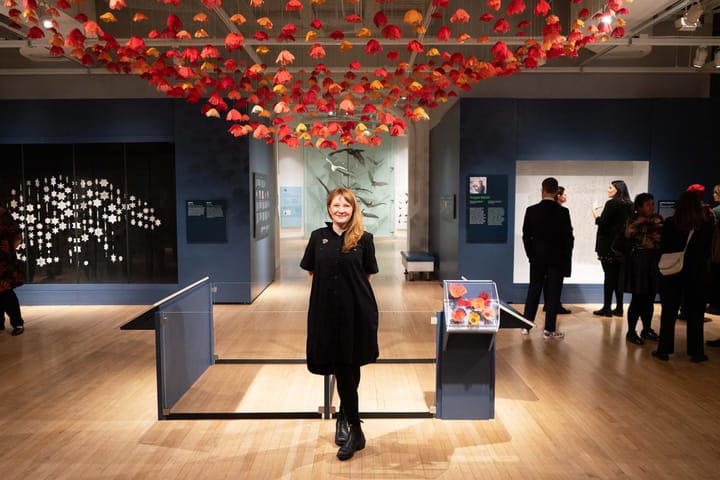
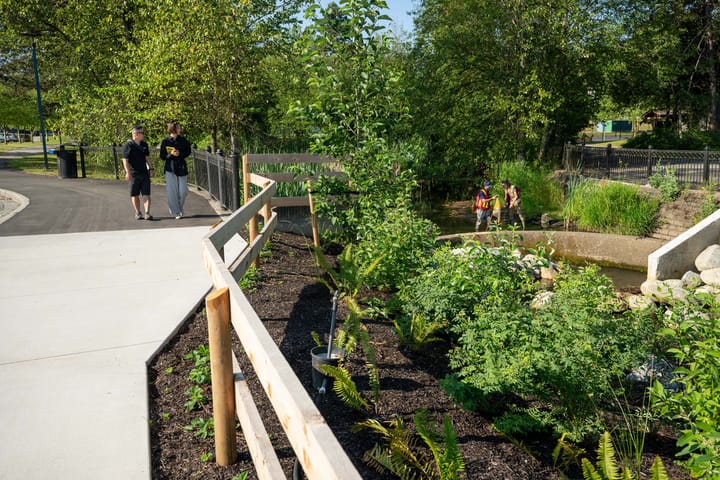
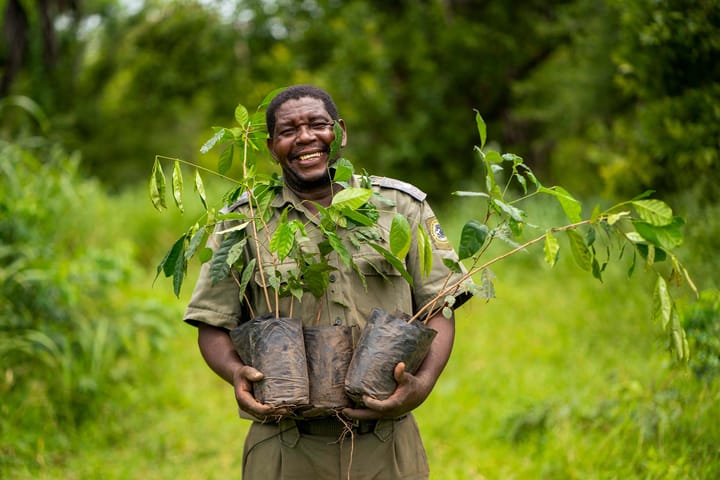
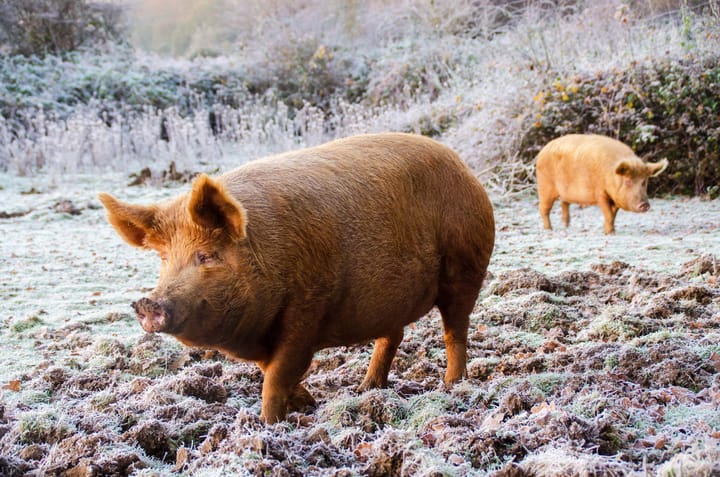
Comments ()